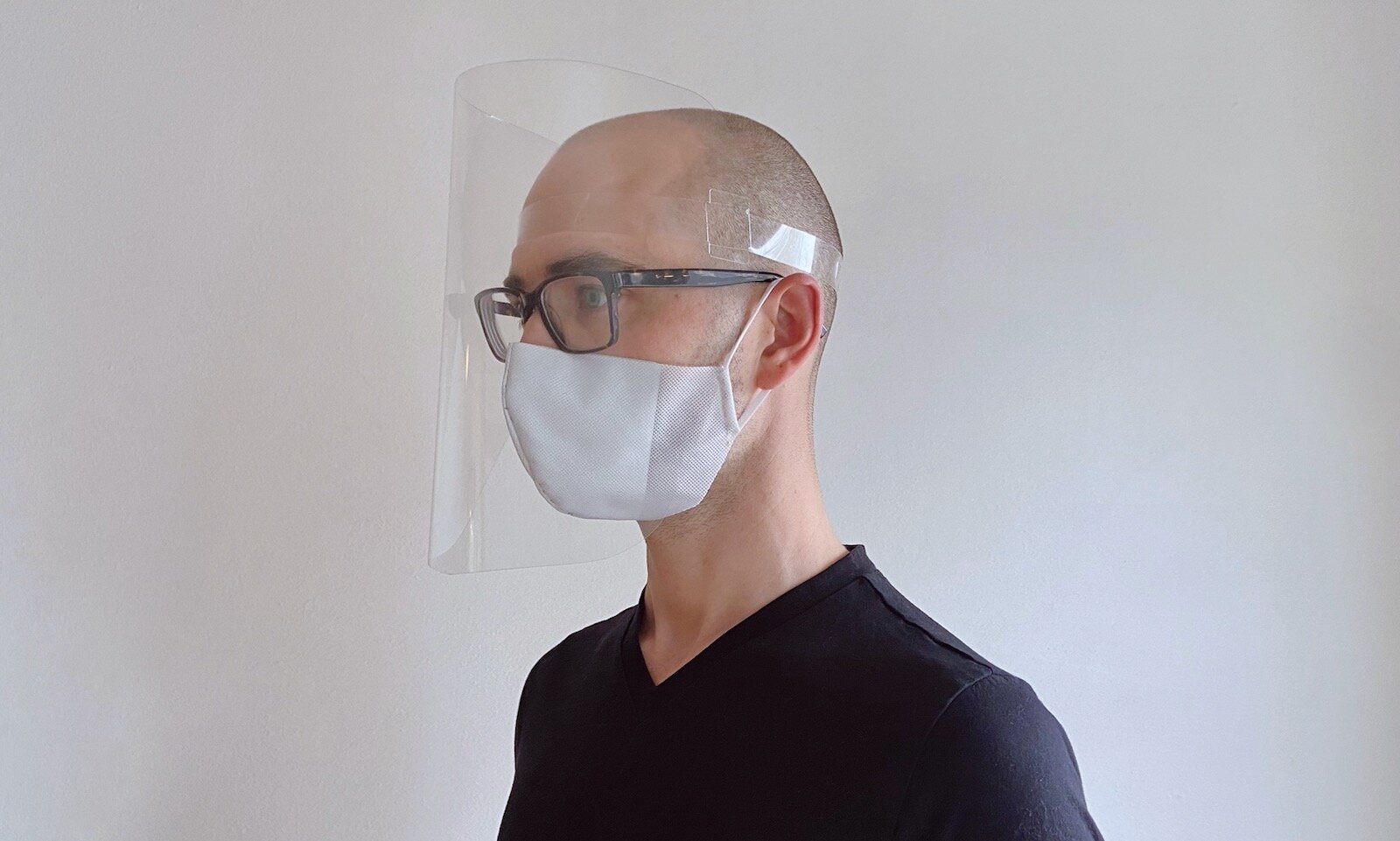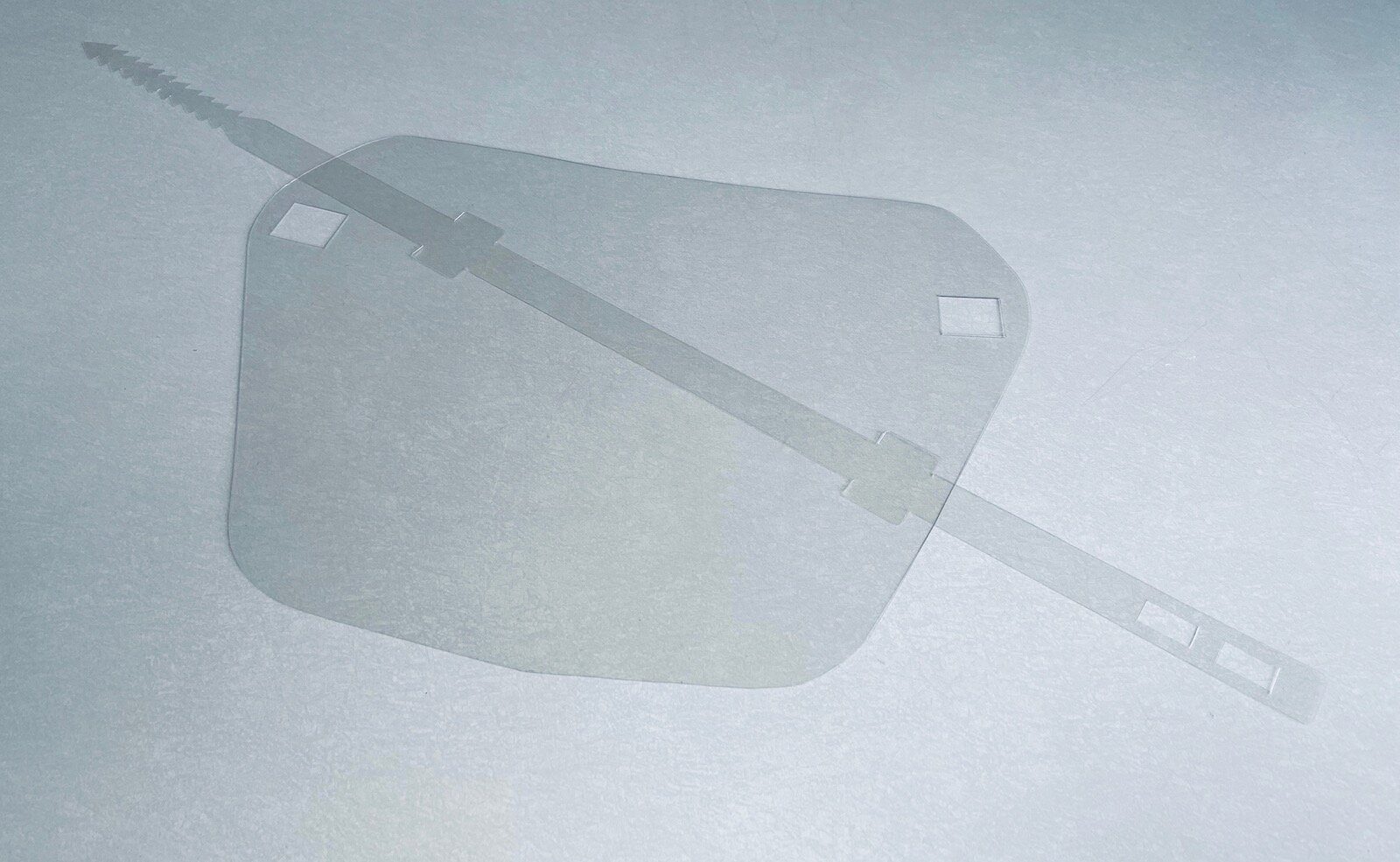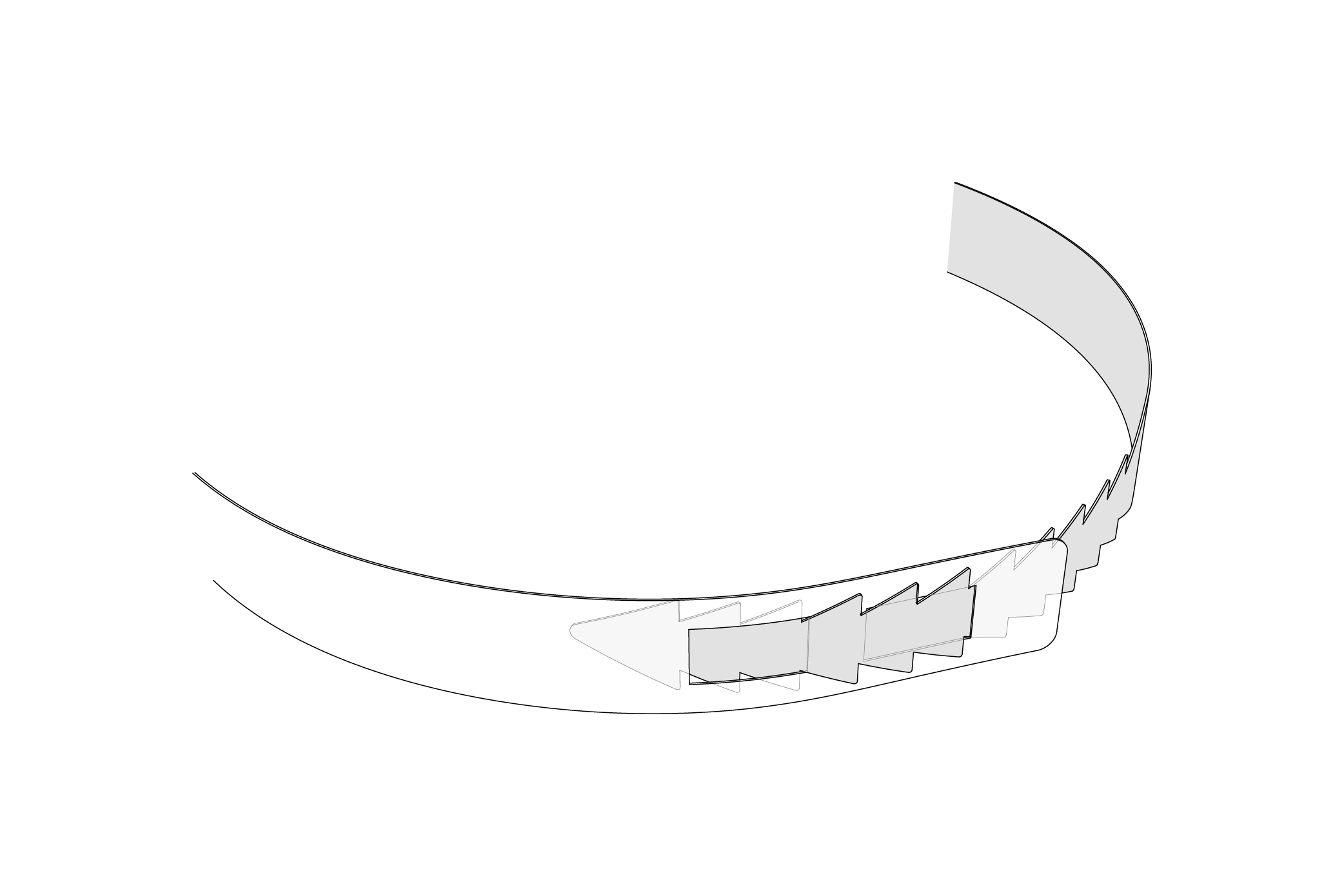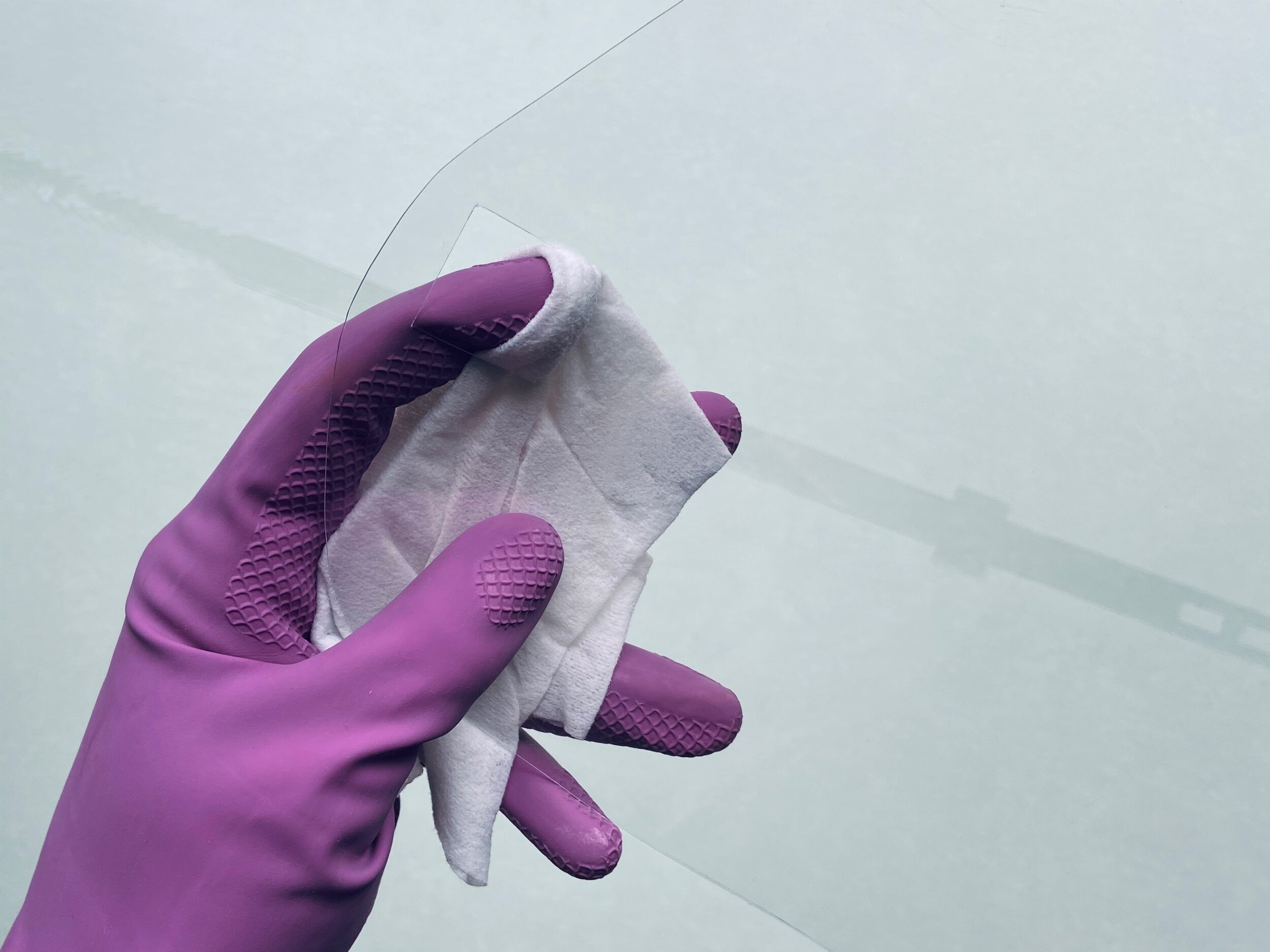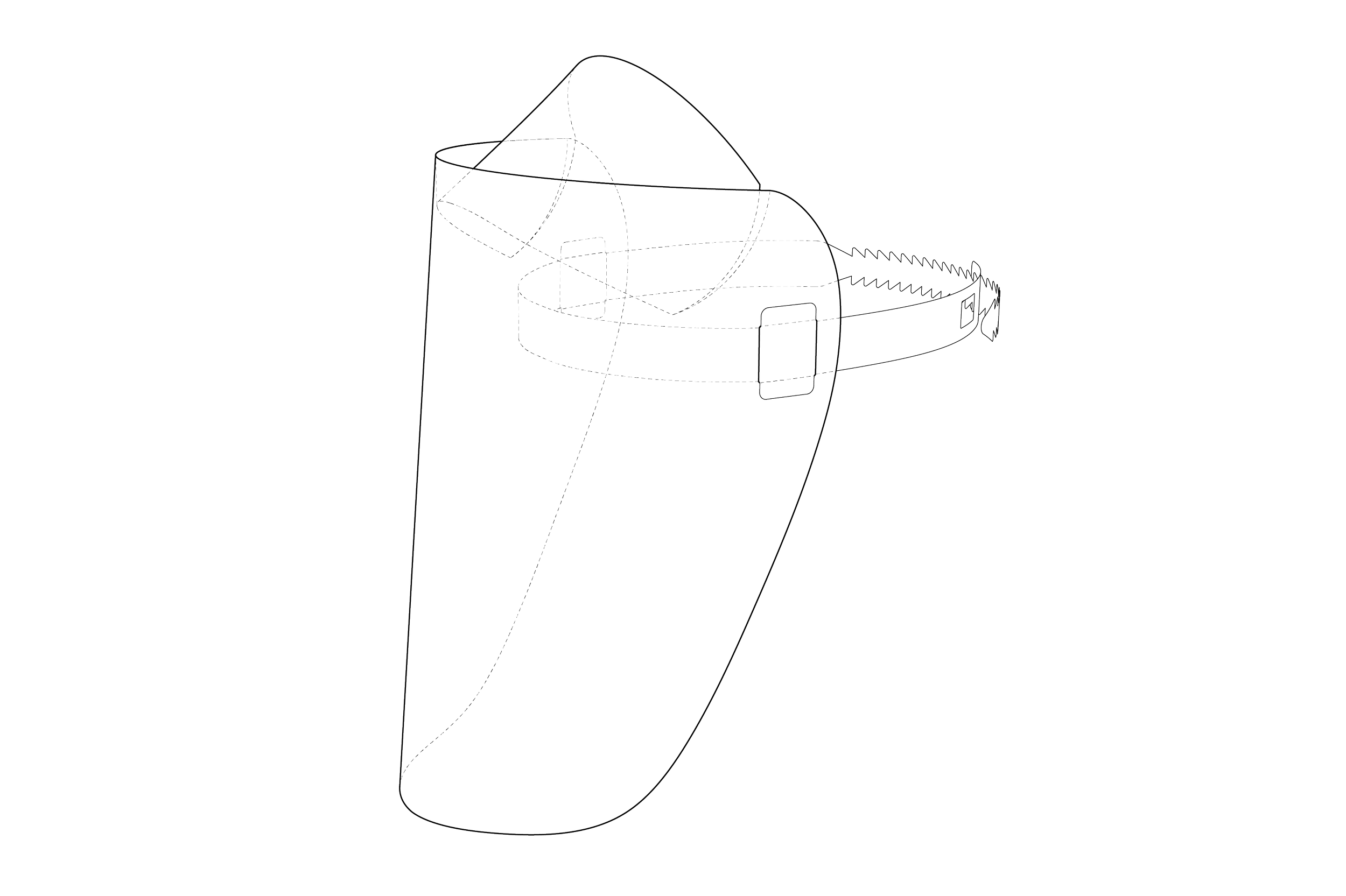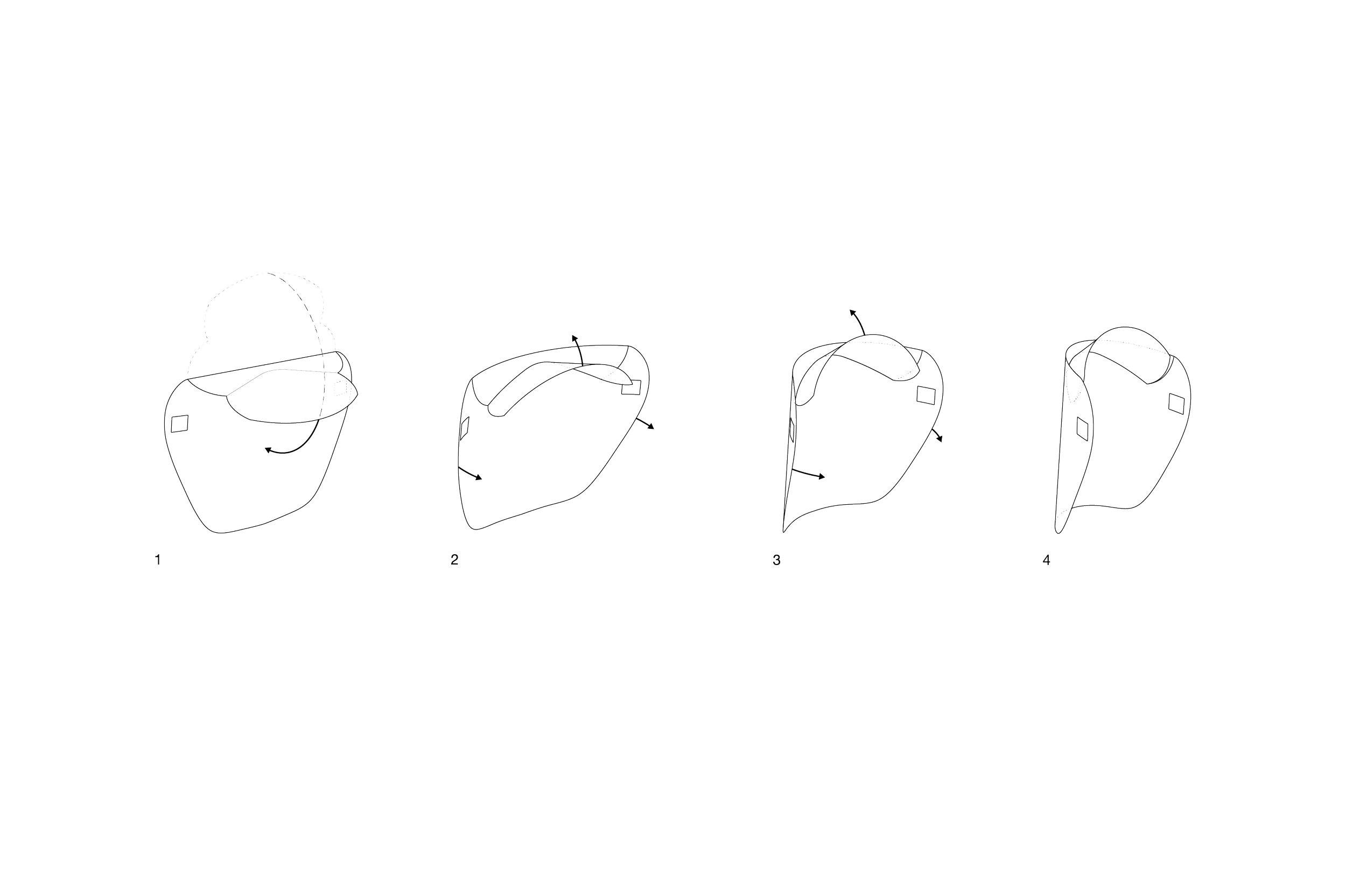PPE / Face Shield
FIELD Medical, PPE
YEAR 2020
STATUS US Utility Patent, 2021
ROLE ideation, concept development, research, prototyping, design for manufacturing
ELEMENTS tool-free assembly, flat-pack shipping, one-step manufacturing, recyclable at end-of-life
MATERIALS PET/PETG/APET
ANALYSIS
With an unprecedented shortage of PPE due to the COVID-19 pandemic, designers and manufacturers from beyond the medical sector were offering their services. Manufacturers were mimicking conventional face shield designs featuring plastic sheeting, foam, and elastic. However, sourcing these materials had become increasingly difficult as supplies diminished. Designers relied on 3D printing to create face shields, but this production method was expensive and slow.
During this pandemic, the shortage in PPE was forcing healthcare workers to resort to decontaminating their face shields for reuse. 3D printed parts, foam, and elastic were porous and difficult to decontaminate.
A better face shield was needed to respond to the problems at hand. It had to be made economically and rapidly. It had to be assembled easily and shipped efficiently so it reached the areas most in need. It had to navigate material shortages and allow for efficient decontaminating. Furthermore, it had to be reliable and comfortable for extended periods of time.
OBJECTIVES
Develop a face shield that can be manufactured at a rate that responds to the demand for PPE.
Focus only on essential materials in order to simplify the supply chain.
Design a face shield that is intended to be decontaminated and reused, per protocol.
Create a positive experience for healthcare workers and simplify logistics for those sourcing PPE.
MANUFACTURING
This face shield is made entirely from plastic sheeting - the only material essential to all face shields. A range of plastics, including but not limited to PET, PETG, and APET, are acceptable.
Eliminating foam and elastic simplifies the supply chain, requiring the sourcing of only one scarce material instead of three.
A single material allows for a simple manufacturing process. In this case, the only step is to cut the material. Die cutting is an extremely cost and time effective method.
This field shield is assembled by the user, in seconds. This eliminates factory assembly and allows for very efficient, flat-packed shipping (500 units stack less than 8 inches high).
ASSEMBLY
The simple tab system allows this face shield to be assembled by a healthcare worker, wearing gloves, in less than ten seconds. Interfacing the band and shield creates space between the shield and the user’s face.
Because these face shields are not pre-assembled, they remain flat-packed in storage, minimizing the burden of storing high quantities at healthcare facilities.
FITTING
Fitting the face shield is intuitive. The quick closure system automatically adjusts the band to fit any size head. A second hole in the band allows the loose tail to be tucked away, while also providing additional security. This process can be executed with gloves on.
CLEANING
The cleaning process is streamlined because this face shield can be disassembled and laid flat which allows it to be easily wiped down. Not only does this design avoid porous materials, it also avoids folds, slots, crevices, and small holes that are difficult to clean. The only holes on this face shield are large enough to be accessed with a finger and a disinfectant wipe.
RESULTS
Using a single material, a single manufacturing process, and eliminating factory assembly, these face shields are produced in seconds.
Eliminating non-essential materials in order to simplify the supply chain makes this face shield easier to produce and provide to healthcare workers.
The cleaning process was a focal point of this design. Because it is non-porous and fully accessible, this face shield is potentially safer for reuse.
Extremely lightweight and adjustable, this face shield is comfortable to wear for extended periods of time. The assembly, fitting, and cleaning processes are fast and intuitive. Transporting and storing these face shields is efficient by design.
In 2020, Sprouse Design Co. and SciTex Supply partnered to distribute this product in the United States.
In 2021, The Face Shield System was granted a Utility Patent by the U.S. Patent and Trademark Office.

